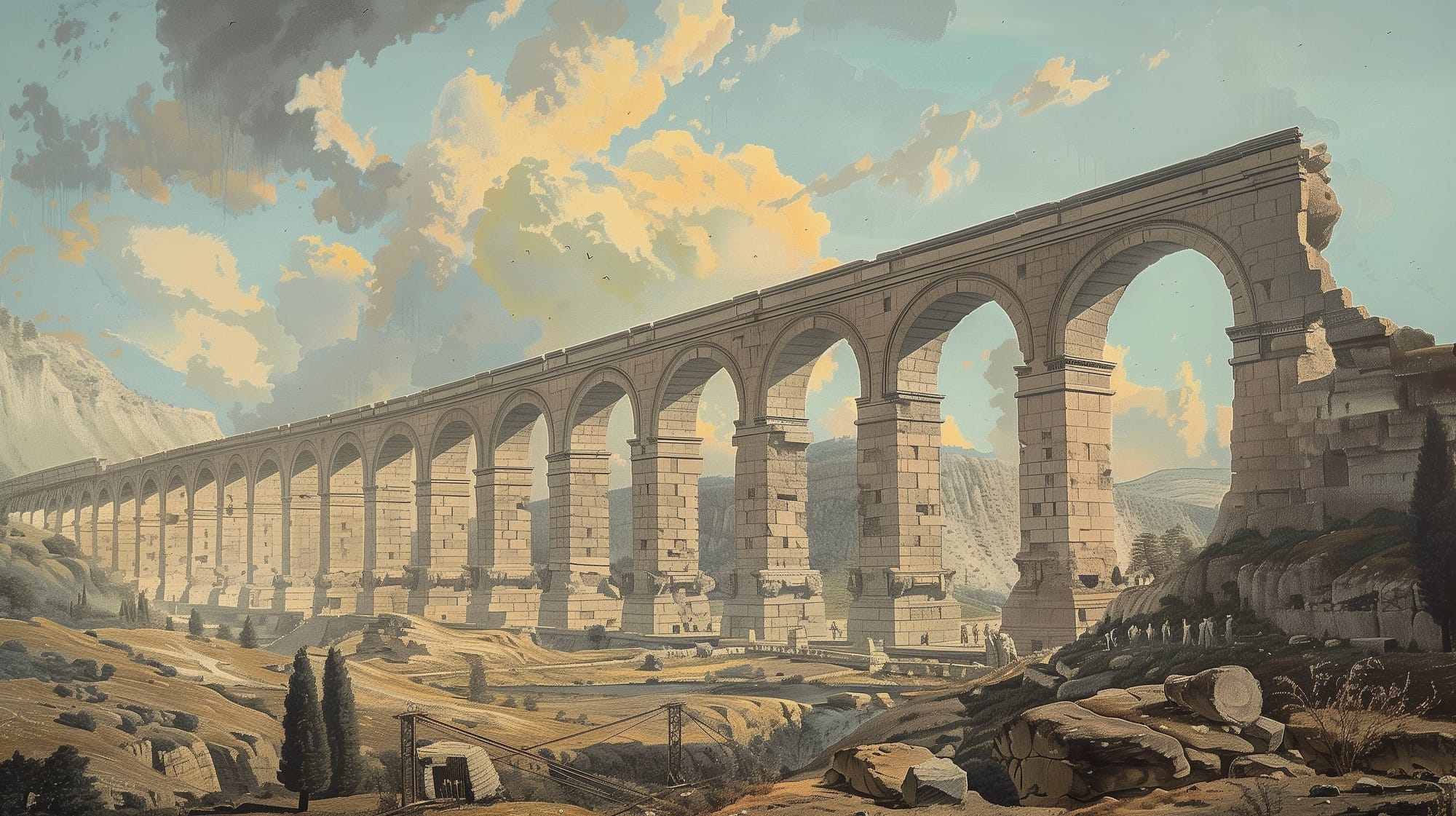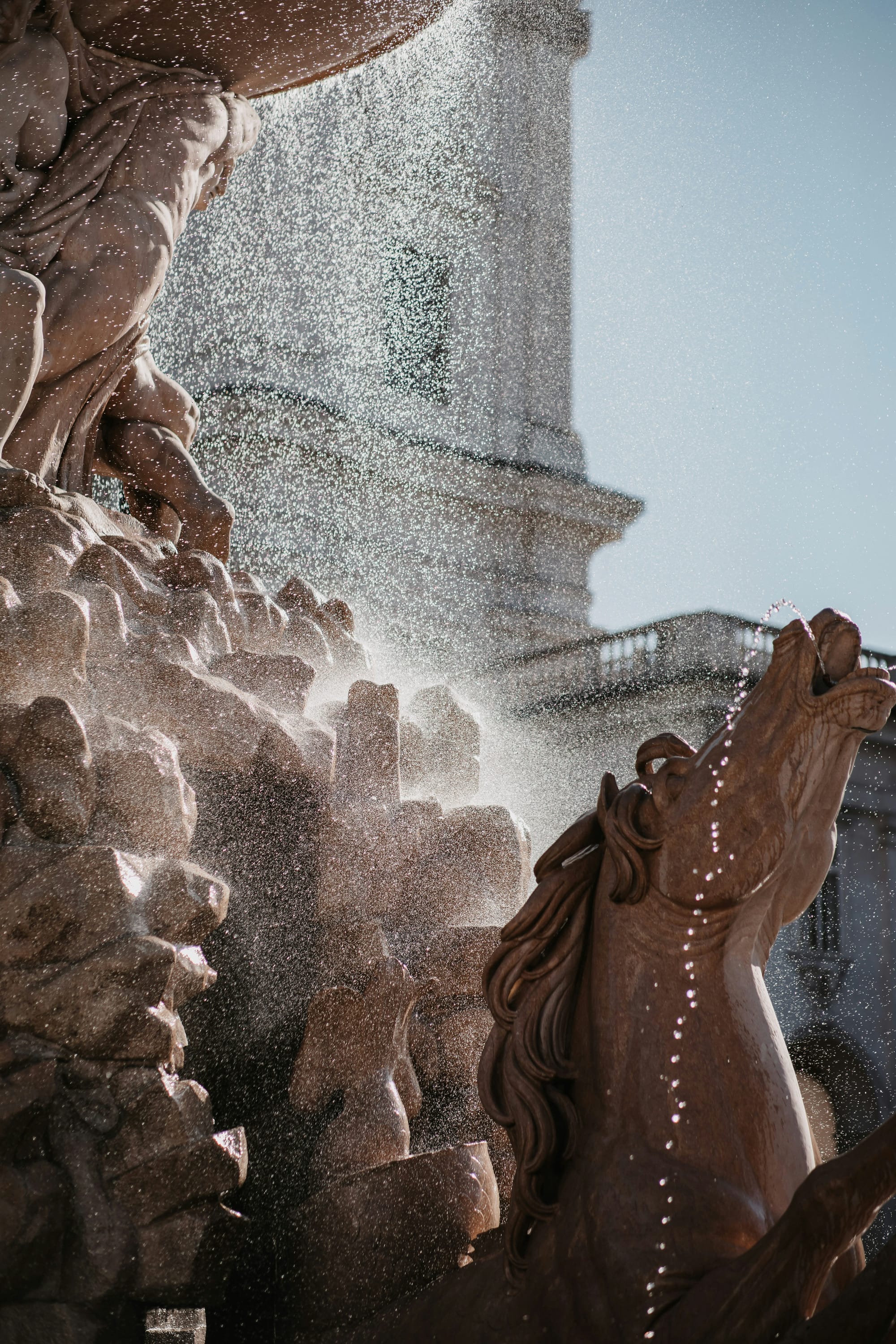Aqua Virgo: A 2000-year Roman aqueduct that still works
The Roman aqueduct that serves the city of Rome for 2000 years

The Aqua Virgo, one of Rome’s ancient wonders, has been a lifeline for the city for over two millennia. Originating during the reign of Augustus in 19 BC, this aqueduct not only stands as evidence to Roman engineering mastery but also continues to serve the modern city, making it a unique blend of historical legacy and contemporary utility.
Historical Background
The Aqua Virgo, one of the eleven aqueducts serving ancient Rome, was completed in 19 BC by Marcus Agrippa during Emperor Augustus' rule. Its primary purpose was to provide water for the Baths of Agrippa located in the Campus Martius (and other areas including Transtiber, which it reached via the Pons Agrippae) and it was actually build with Agrippa’s own money.
At its operational height, this aqueduct had the capacity to channel over 100,000 cubic meters of water daily to the city.
Though the aqueduct’s water source was east of Rome on Licinius Lucullus's estate, it entered Rome from the north—uniquely doing so among Roman aqueducts. This choice for a longer, roundabout path around the city walls, which ended nearly directly in line with its source, was possibly due to difficulties in acquiring private land for its construction.
Despite Agrippa's influence and presumed support from Augustus, after whom he named the aqueduct (according to Dio, Roman History), he might have faced challenges securing private property, compelling him to construct the aqueduct over public lands instead (as Frontinus notes, most conduits were built through private properties, The Aqueducts of Rome).
As the sixth aqueduct built for Rome, its starting point was at the eighth milestone on the Via Collatina—a less significant route leading to Collatia, associated with Lucretia’s tragic story recounted by Livy (History of Rome). From there, it stretched over 14,105 paces or approximately 21.5 kilometers (over thirteen miles), with a 'passus' measured as two marching steps or five feet, as specified by Frontinus (X.5) and Pliny (Naturalis Historia, XXXI.420).
The aqueduct's name, which translates to "Virgin Water," is believed to originate from the exceptional purity and clarity of its water, which exhibited minimal calcification. A tale recounted by Frontinus tells of Roman soldiers, parched and seeking water, who were led by a young girl to the springs that eventually fed the Aqua Virgo, with the aqueduct being named in her honor.
"What shall I say of streams suspended on airy arches, where scarce the Rainbow-Goddess could raise her showery waters? You might rather call them mountains grown up to the sky: such a structure Greece would praise, as giant-wrought. Rivers diverted are lost sight of within thy walls: the lofty baths consume whole lakes."
Rutilius, A Voyage Home to Gaul (I.97-103)

Engineering Marvel
The Aqua Virgo is distinguished by its reliance on gravity flow, using a gentle gradient to ensure water movement from the source to the city. Unlike many ancient aqueducts, it was predominantly built underground to protect it from natural and human threats, ensuring its longevity. The construction techniques involved meticulous stone-cutting and tunneling methods that have stood the test of time, with much of the original structure still intact and functional.
The conduit of the Aqua Virgo ran underground within a closed channel (specus) before appearing on the Pincian Hill just beneath the Horti Luculliani, or the gardens of Lucullus, located above what is now the modern Piazza di Spagna.
It then looped west around the Quirinal Hill for 700 paces elevated on arches, leading to the Campus Martius where it dispensed almost two-thirds of its water, ending at the Saepta Julia (XXII.2; according to Ovid, near the Temple of Juturna). The Saepta Julia was a renovated voting precinct reopened by Agrippa in 26 BC.
Water from this point was distributed via underground pipes from a castellum, a kind of reservoir or distribution tank.
The aqueduct served multiple vital functions including supplying water to the Thermae Agrippae—Rome’s first grand bathhouse. It also fed the Stagnum, an artificial lake to the west, notorious for the debaucheries arranged by Nero, who hosted displays involving noblewomen and prostitutes on its banks while he sailed a barge in its center. Additionally, the aqueduct provided water to the Euripus, a decorative canal that ran directly to the Tiber; in fact, 20% of the aqueduct’s output was allocated specifically for this canal. This canal was used for swimming and likely served as a plunge pool for the baths. The channel’s cold water was frequently noted, and Agrippa commemorated the area with a statue of a fallen lion by Lysippus, placed in a park between the canal and the lake.
An underground channel was less susceptible to damage and extremes of heat and cold, and the water of the Virgo was celebrated for its purity. Augustus recommended it to those complaining about a scarcity of wine and Pliny contends that the soft water was considered particularly fine for bathing, being cool to the touch. Statius, too, remarks on the Virgin of the swimming pool.
Martial, muses about the Campus and its Virgin water, so brilliantly clear that one scarcely suspected it even was there, with only the polished marble over which it flowed to be seen. The cold water also refreshed the athlete after exercise and dampened desire if need be. Seneca, too, comments on the temperature, ruefully remarking that, whereas he now enjoys a warm bath, he used to celebrate the new year by taking a cold plunge in the Virgo.
Ovid reminisces in exile on the pleasures of Rome: Its porticoes, the view from the grassy Campus, and the Virgineus liquor (Ovid, Ex Ponto, I.8.38). The phrase is poetic and has been translated "the flowing streams of Virgo" but also "the damp Virgin Conduit," which causes one to wonder at the erotic ambiguity.

Contemporary Relevance
The Aqua Virgo, was restored during the Renaissance and still functions today under its historical name. Originating from the springs in Agro Lucullano near the 8th mile marker along the Via Collatina, located in today's Salone area, the aqueduct traverses a largely subterranean course exceeding 20 kilometers before terminating in Campo Marzio. It begins southeast of Rome and makes a broad arc to enter the city from the north. The route follows the Via Collatina to Portonaccio, crossing the Via Tiburtina, and spanning the Fosso della Marranella on arches at its junction with the Aniene river.
A notable elevated stretch, 320 meters in length and constructed of tuff reticulated work, stands prominently in this area. The Aqua Virgo then proceeds towards the Nomentana and Salaria, arching southward to pass through Villa Ada and the Parioli district, beneath the nymphaeum of Villa Giulia, and enters the city near Muro Torto.
Near the slopes of the Pincio, a decantation tank known as a piscina limaria was situated, accessible by a picturesque spiral staircase built during the Renaissance era. The aqueduct becomes visible at Via due Macelli and continues above ground on arches. Notable remnants are observable inside the Rinascente at Via del Tritone and at Via del Nazareno.
Remarkably, after two thousand years, the Aqua Virgo still serves Rome, providing water to notable fountains like the Trevi Fountain and the fountains of Piazza Navona. Its water is famed for its quality and taste, often preferred over modern water sources.

Cultural and Touristic Impact
The Aqua Virgo remains operational today, supplying water to several of Rome's iconic fountains. Notably, the façade of Fontana di Trevi depicts the history of this ancient aqueduct. On the upper left panel, you can see a representation of the Roman general Agrippa reviewing the aqueduct's plans. On the upper right, a figure of a Virgin directs Roman soldiers to the water source.
The name "Virgin" is thought to reflect the pristine quality of its waters. At the center of the Trevi Fountain stands a magnificent sculpture symbolizing the ocean.
There is another explanation for the name: According to Frontinus, the name Aqua Virgo originated from an incident where "this same Agrippa developed another source on the property of Lucullus and brought Virgo into Rome. The date on which this water first came forth in the City is recorded as the 9th of June. It was called Virgo, because a young girl indicated certain water veins to the soldiers who were hunting for water, and the diggers who were to pursue them summoned up an enormous quantity of water. A painting which represents this origin is displayed in a small shrine set up near the source".
Concurrently, Pliny offers a different etymology, noting the peculiar behavior of its waters: "Near the source of the spring was the stream of Hercules and 'because the Virgin Water runs away from this it was so named".
The Trevi Fountain, a pinnacle of late Italian Baroque architecture, was completed and inaugurated in 1762, designed by Nicola Salvi.
The Aqua Virgo also represents a cultural touchstone for Rome, symbolizing the city’s deep historical layers. It is a popular site for tourists and historians alike, offering insights into Roman Empire's urban planning and public utilities. The path of the aqueduct is a route that invites exploration, revealing both visible remnants and hidden sections that tell the story of Rome’s development from an ancient empire to a bustling modern metropolis.





About the Roman Empire Times
See all the latest news for the Roman Empire, ancient Roman historical facts, anecdotes from Roman Times and stories from the Empire at romanempiretimes.com. Contact our newsroom to report an update or send your story, photos and videos. Follow RET on Google News, Flipboard and subscribe here to our daily email.
Follow the Roman Empire Times on social media: